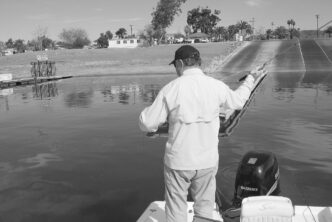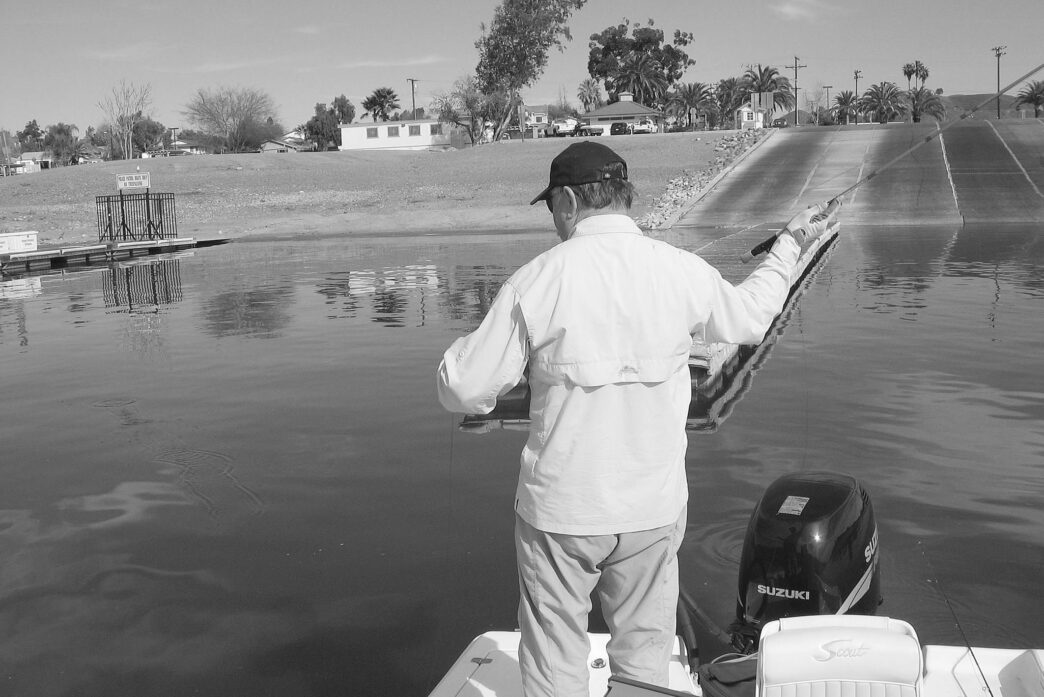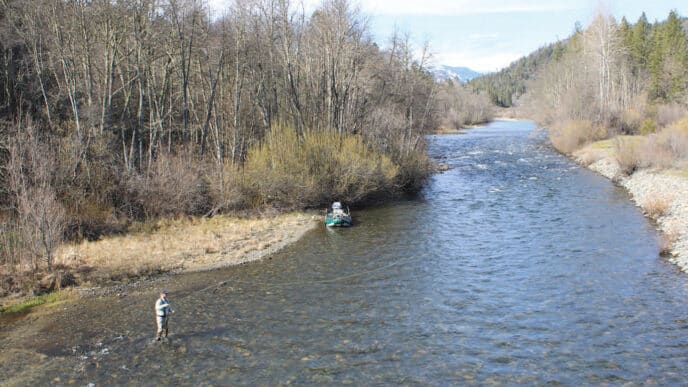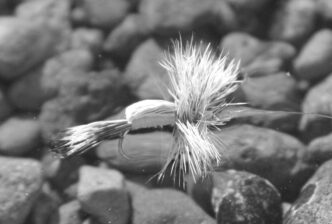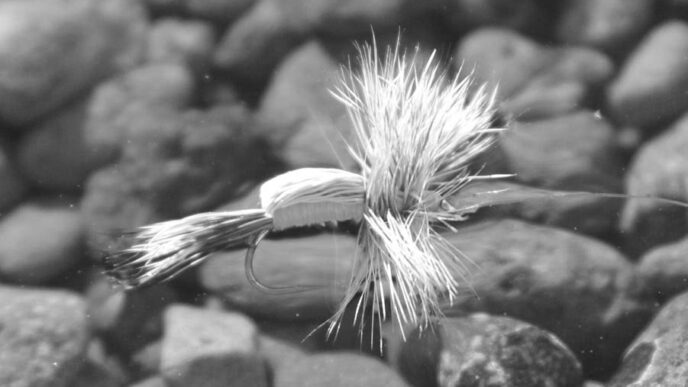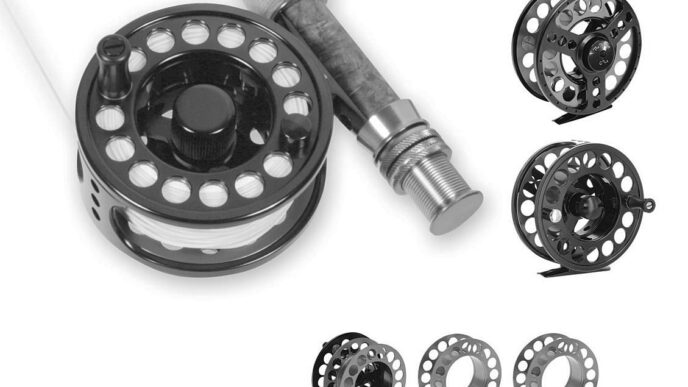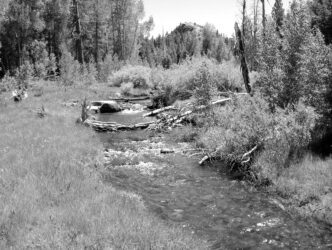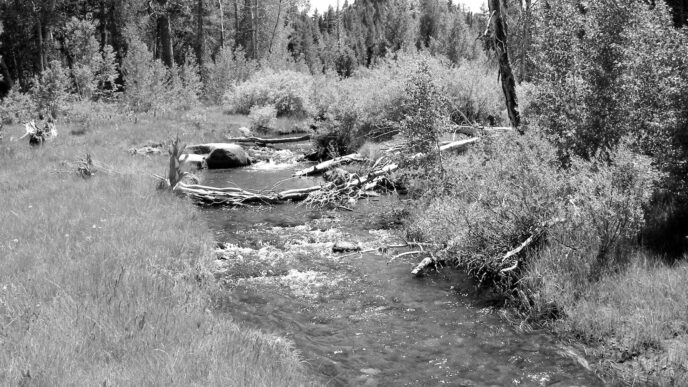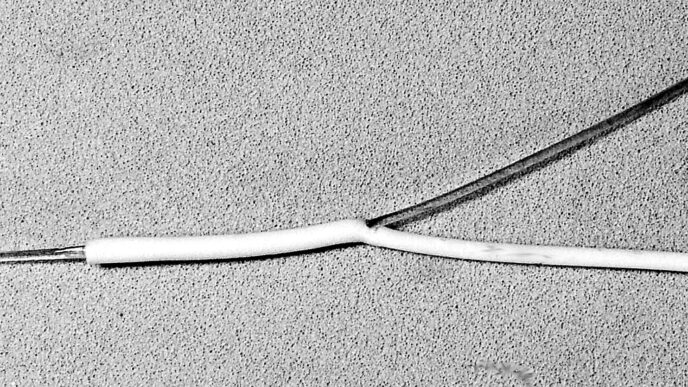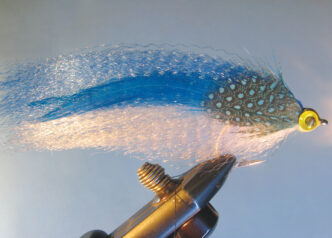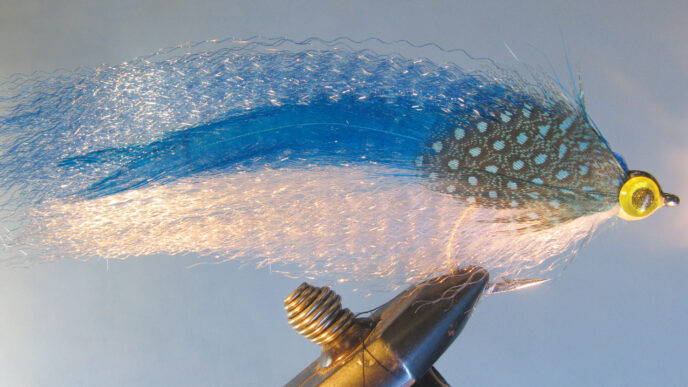I write this on a bleak winter dawn. The air temperature on my back patio, here in moderate Southern California, is a chilly 24 degrees. The breeze is already rustling what is left of the leaves on the plum trees in my front yard. Later, we can expect the wind to increase until it is strong enough to whitecap the local bass lakes. If the sun continues to shine all day, by midafternoon, the temperature will peak at something like 50 degrees. If we get clouds — a reasonable expectation at this time of year — the temperature won’t get out of the 40s.
For the dedicated (or slightly crazy) trout angler, this means donning cold weather gear and fishing streamers or nymphs to hook one or two lethargic fish. For the bass flyrodder, it means catching up on your bass bug tying or cleaning and oiling reels and seeing to the rest of your tackle. It’ll be a while until you can get out and find some decent bass angling.
By “a while,” I mean several weeks, until the end of February brings a bit of warmer weather and we are far enough beyond the winter solstice that the lengthening days motivate the bass to begin moving from deep-water winter haunts in search of forage and spawning habitat.
Unfortunately, those days seem far in the future when you are stuck in the house in the middle of winter’s doldrums. You could just say the heck with it and spend the day watching TV, or you could actually go fishing for warmwater fish in cold water. The point is that while bass, compared with trout, are a species that prefers warmer water, they still have to live through the winter, and they have to do it in the same lakes where you catch them during the summer.
In bygone days, bass anglers used to think that bass bury themselves in the mud at the bottom of lakes and rivers and hibernate through the cold winter months. This was often taken as gospel truth and was repeated in the bass-fishing books of the time — often by writers who caught the occasional bass in winter themselves.
No, bass do not bury themselves in the mud and hibernate. They do, however, retreat into the depths in search of the warmest water they can find, and their metabolisms slow to the point where they don’t require nearly the amount of food in the winter that they consume in the spring and summer.
Conventional-tackle bass anglers adopt tactics in the winter to search out and catch bass in deep water. Spend a day out with a bass-fishing friend some winter, and you’ll get a lesson on how to fish deep water. I’ve stood on the flat deck of a bass boat dressed in a foul-weather suit appropriate for Nome, Alaska, and jigged a heavy silver spoon up and down on nearly a hundred feet of monofilament, searching for bass lying nearly comatose on the bottom of the deepest hole we could find. This tactic actually works. The bass mistake the fluttering descent of the chrome spoon for a dying shad fluttering down, and they do (occasionally) snap it up.
It’s not my preferred style of fishing. Any true bass angler would much rather be tossing top-water lures to active fish on or near the surface. And for the fly angler, there’s just no way to duplicate this deepwater tactic or most of the other tactics used by lure anglers to catch winter bass. Still, there are ways you can hook a few bass, even in the worst of the winter.
For one thing, not all winter days are the same. This is especially true of bass waters in Southern California. A few days of cold, nasty weather, brought south by one of the repeated cold fronts that slide down the coast, is usually followed by at least a day or two of slightly warmer weather. In some years, you’ll get repeated springlike conditions in which the air temperatures will balloon up to the high 60s or even 70s. I have fished on a lake in San Diego County wearing shorts and a T-shirt during the first week of February, but conditions like that don’t come very often, and in some (most) years, not at all.
Still, if you get two or three days of warmer weather between cold fronts, that second or third day holds the promise of decent angling. Anytime the air temperature slides above the 50-degree mark for a few hours, your chance of catching a bass goes way up.
This is especially true if one other thing happens. If the arrival of the trout truck bringing a load of hatchery-raised rainbows to your local bass lake coincides with one of these short warming trends, your chances improve immensely. The addition of a load of fresh food (and like it or not, that’s what the bass think of hatchery trout) will spur the bass into action like nothing else will.
I remember well the story I was told by a bass-fishing friend many years ago. He was down at a small bass lake in San Diego County on a chilly winter day when he witnessed a spectacular event. About half an hour before the hatchery truck showed up with a load of winter trout, the area around the launch ramp began to swarm with big bass.
He told me there were at least a dozen fish over 10 pounds lurking near the ramp, and a couple of these behemoth bass had to weigh close to the 20-pound mark. Just how they were aware that the stocking truck was about to arrive is something we’ll probably never know for certain. The point is, they were there, and when the crew from the Department of Fish and Game started pouring the dazed rainbows into the lake, each big bass snapped up one or two, then slowly faded back into the depths. To say it made an impression on my friend is to understate the thing. He spent the next few winters trying never to miss the planting of a load of trout. Over those years, he caught and released more than a dozen giant bass, each weighing more than 10 pounds.
Times like these have produced some of the biggest largemouth bass ever taken in a state where more big largemouths have been caught than in any other. The conventional-tackle bass anglers will fish the area with big wooden or plastic imitations of a rainbow trout. Some of these lures are highly realistic in appearance. I would say without reservation that fishing in the winter after a trout plant is probably the best way of catching a true trophy largemouth bass.
Are you, as a fisher of bass with flies, able to get in on this type of angling? The answer is — sort of. You can’t hope to duplicate the foot-long rubber or hardwood trout imitations tossed by your lure-fishing buddies. Streamer flies of this size are difficult things to cast, adding an additional layer of misery to what is likely to be a less than perfect day on the water at the best of times.
I’ve tried most of the techniques over the years. I’ve fished foot-long flies with tandem-hook rigs and big, sketchy streamers of polar bear hair and various flashy materials that cast like wet socks, following the trout-stocking trucks. And I’ve fished sinking lines, trying to emulate bass anglers’ deep-water tactics, even going so far as to fish a lead-core shooting head on the front of a fast-sinking line to get a fly down to where I thought the big boys (actually girls, since virtually all really big bass are female) would be lurking. Some of the time it worked, most of the time it was just a pain in various parts of my anatomy.
And no, I never did catch a really big bass using any of these techniques in the winter. I have caught bass weighing in the 7-pound range in January and February and have actually been on hand when a guy I know caught a nearly 16-pound bass on a lure. I thought for a brief moment about nudging him into the lake, just to wipe that silly grin off his face.
It makes just as much sense to fish a streamer of normal size in the midst of the melee as it does to try to throw some outlandish fly that just about breaks your arm to cast. Once bass start feeding, they aren’t too selective. They’ll snap up almost anything that swims by. A simple bucktail or feather streamer about three to four inches long that looks like a shad or any other baitfish the bass might reasonably expect to see will be eaten, even if the major prey that day is a 10-inch-long trout.
For a decade or more, many fly anglers in the Southern California have been successful using a very simple white fly championed by local guide Bob Slamal. This fly mimics threadfin shad, and it will work as well as anything else you can throw for winter fish. Other good flies also have a lot of white or silver in them to resemble the threadfin shad and silversides that make up so much of the forage base in most of the local lakes. A white Marabou Muddler with a bit of red flash will usually attract hits. Another is a version of the Clouser Minnow called the Coyote. This fly has a small (really small) Colorado spinner blade in nickel or silver suspended on a swivel just under the head. It was originally developed for striped bass and wipers (hybrid striped bass) on a lake in the South, but I find it works quite well on active fish in California during the winter, as well as during the summer.
The Delta Fly, a chunky bucktail streamer originated by the late Dave Cox for stripers, is another good shad imitation. This one was designed to fish in fairly shallow water, and the bucktail doesn’t sink well, but I’ve caught some large bass with it on a fast-sinking line that dragged the Delta Fly down to where the fish were. Let’s say for a moment that you are suffering from an unbearable case of cabin fever and you just have to get out and give this winter bass thing a try. Following just a couple simple rules will help. First, take advantage of any warming trend that comes along. If you can find an area of your lake that has water just one or two degrees warmer than the surrounding waters, the chances are better you’ll find some feeding bass. And second, take advantage of any trout plants that happen. There’s nothing like the feeding frenzy that usually accompanies a trout plant to get at least a few of the better bass in a lake to come up out of the depths to snatch a trout or two.
This, by the way, works just as well when targeting striped bass as it does when targeting largemouths. You could go bass fishing and wind up with a fat striper, instead. I know, it’s tough going, but that’s winter bass fishing.



